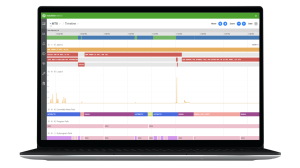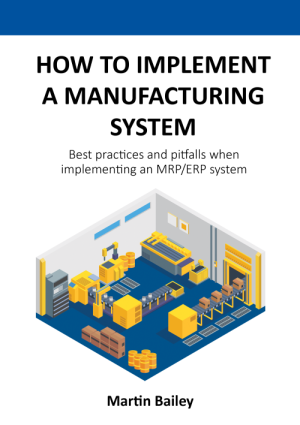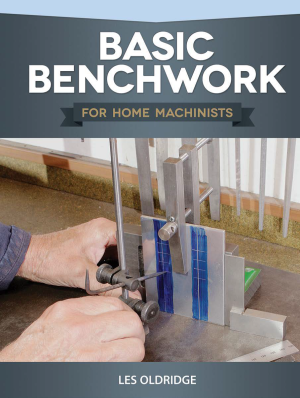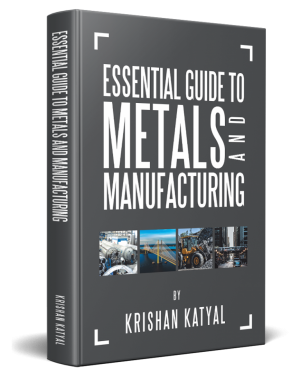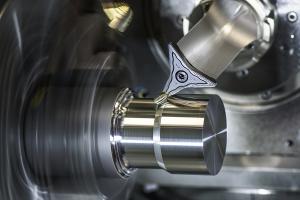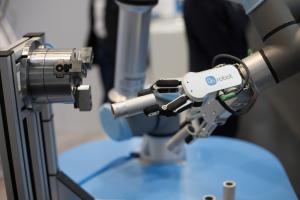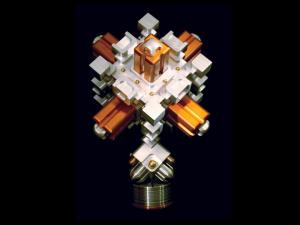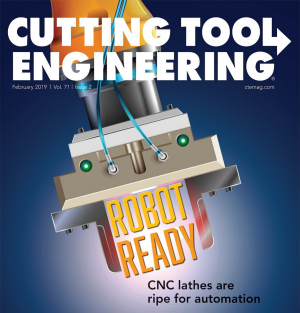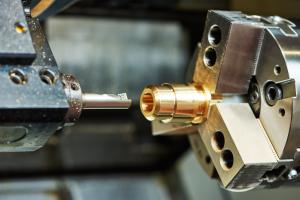Editors' Blogs
With the arrival of Industry 4.0, a new business model is emerging for how part manufacturers acquire machine tools: equipment as a service (Eaas). Graham Immerman, vice president of marketing for Northampton, Massachusetts-based MachineMetrics Inc., effectively covers this topic in his new 12-page ebook/white paper titled “Equipment-as-a-Service: A Brave New World for Machine Tool Builders.” In an interview with CTE, he said, “Instead of buying a machine and fully financing it or paying cash, you can pay as you use it.”
I received an email from Lynn Fifer, a retired cutting tool professional and CTE reader since 1967, who shared his recollections about the development of the parabolic flute drill. Fifer said the development occurred in 1950s at the old Mohawk Tools Inc., Montpelier, Ohio, well before he started with the toolmaker in 1967.
When making a cutting tool, I tend to think of a drill, endmill or other metalcutting tool being produced on a CNC tool and cutter grinder in a factory. A book by Bradley Richardson, however, describes how to make a different type of cutting tool with manual tools and equipment in a nonproduction environment. Published by Fox Chapel Publishing Co. Inc., Mount Joy, Pennsylvania, “Making Your Own Bush Knife: A Beginner’s Guide for the Backyard Knifemaker,” details the process of creating a custom knife.
When parts manufacturers enter the world of Industry 4.0, in which their operations are data driven, they will need production control software, such as a program for enterprise resource planning or materials requirement planning. In his new book “How to Implement a Manufacturing System,” Martin Bailey covers the best practices and pitfalls when implementing an MRP/ERP system.
Although the book doesn’t cover machining parts, “Blowout” by Rachel Maddow, host of “The Rachel Maddow Show” on MSNBC, does examine an industry that’s a major consumer of precision machined parts—oil and gas.
Although the title of a book I received a digital review copy of is “Basic Benchwork for Home Machinists,” it contains information that even metalworking professionals might implement on the shop floor or at least enjoy reading.
As manufacturers continue to be challenged by a shortage of skilled workers and the need to boost productivity, automation remains a topic of significant interest. That was certainly the case at the Wisconsin Manufacturing & Technology Show. The biennial trade show took place Oct. 8-10 at the Exposition Center at Wisconsin State Fair Park, West Allis, Wisconsin.
After a bit of a hiatus, I received a new book about metalworking, “Essential Guide to Metals and Manufacturing” by Krishan Katyal. The author is a mechanical engineer who has worked for four decades designing and manufacturing machine tools, consumer appliances, diesel-electric locomotives and heavy concrete construction products for Chicago area companies.
MC Machinery Systems is known as a supplier of Mitsubishi EDMs and laser machines, and Mitsubishi EDM/Laser is prominently displayed on the company’s headquarters in Elk Grove Village, Illinois, but several seminars focused on hard milling and 5-axis machining were presented during its EDM National open house. The event took place Sept. 26.
As additive manufacturing and 3D printing of metal parts continues to make inroads into production environments, the need to efficiently and effectively finish-machine them when typically required gains importance.
Although Microlution Inc. has been based in multiple locations since the builder of micromachining centers was founded in 2005, the company held its first grand opening event June 28 as part of GF Solutions Days USA 2019. The first location for Chicago-based Microlution, which has operated as a subsidiary of GF Machining Solutions since 2016, was in Andy Phillip’s apartment in Champaign, Phillip said. He is one of the company’s founders and now head of laser micromachining.
My latest trip took me to Las Vegas, where I attended HxGN LIVE 2019. Hosted by Sweden-headquartered Hexagon AB, the ninth biennial conference took place June 11-14 at the Sands Expo & Convention Center adjacent to The Venetian and The Palazzo resorts, and I participated in the Hexagon Manufacturing Intelligence division’s media program.
In connection with the Ceratizit Open Days 2019 press event May 13-15, I visited several of the cutting tool manufacturer’s German facilities (in Stuttgart, Balzheim and Kempten), as well as Ceratizit Reutte in Breitenwang, Austria. The Luxembourg-based Ceratizit Group has combined its Ceratizit, Komet, WNT and Klenk brands under the name Team Cutting Tools.
In response to my Lead Angle column in the April 2019 issue about machining large parts and my attraction to vintage machine tools, I received the following email from Chuck Oloffson, a CAD detailer and former CNC and manual machinist.
Based on the high level of traffic and activity that I saw at Automate 2019 combined with a U.S. unemployment rate of just under 4%, my hunch is that robot manufacturers will report impressive sales figures this year. This guestimate is a result of a conversation I had with Joseph Gemma, CEO of division industries – Americas for KUKA Robotics Corp., Shelby Township, Michigan. According to Gemma, as the unemployment rate decreases, robot sales increase. He emphasized that automation is changing jobs—not taking them away.
One of the best parts of my job is visiting factories where metal parts are machined. In connection with the feature article I wrote for our April issue about machining large parts, I traveled to Romulus, Michigan, and visited Lincoln Park Boring Co.
A metal blisk or heat exchanger component can certainly be aesthetically pleasing, but those and the vast majority of other machined metal parts serve a practical function first and foremost. The metal parts Chris Bathgate machines don’t.
I haven’t received any books about manufacturing lately, but a PDF of the new book “Rock Stars at Home” landed in my inbox, so I read it.
As the cover indicates, the February issue will include a focus on automation. In addition to Contributing Editor Kip Hanson’s cover story about automating CNC lathes, I wrote about the productivity gains Camcraft Inc. is realizing after installing a Makino Machining Complex (MMC2) flexible manufacturing system.
New research by the Copper Development Association Inc., McLean, Virginia, shows that U.S. machine shops may be underutilizing the machinability of brass by as much as 85 percent in part-processing operations. The study says manufacturers can and should be machining the material at significantly higher speeds and feeds—often five to 20 times faster—to increase productivity and profitability.
Pagination
Editors' Blogs Archive
- March2020 (2)
- January2020 (1)
- November2019 (2)
- October2019 (5)
- July2019 (1)
- June2019 (1)
- May2019 (1)
- April2019 (2)
- February2019 (1)
- January2019 (3)
- December2018 (3)
- November2018 (5)
- October2018 (7)
- September2018 (4)
- August2018 (5)
- July2018 (1)
- June2018 (6)
- May2018 (8)
- April2018 (8)
- March2018 (7)
- February2018 (8)
- January2018 (8)
- December2017 (7)
- November2017 (11)
- October2017 (9)
- September2017 (2)

